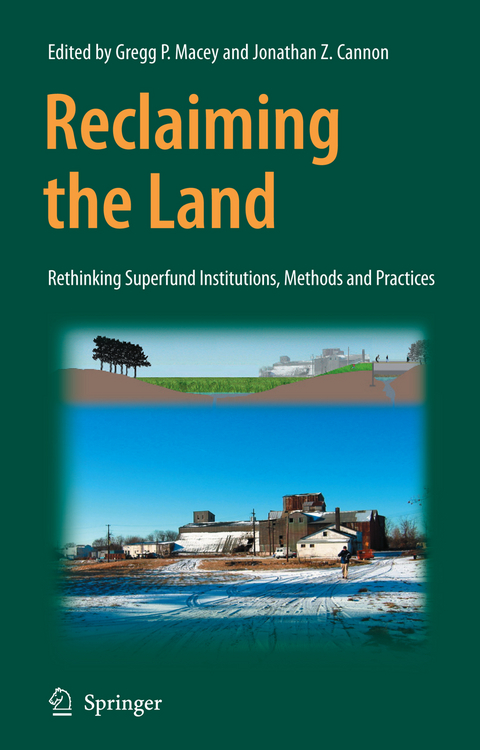
Reclaiming the Land
Springer-Verlag New York Inc.
978-0-387-48856-1 (ISBN)
Marianne Horinko Executive Vice President, Global Environment and Technology Foundation On August 7, 1978, President Carter declared a state of emergency in the community of Love Canal, New York. The President urged residents of Love Canal to evacuate, not because of a recent catastrophic event, but because of something that occurred in the 1940's and 1950's. This Niagara Falls community had been developed on land that was formerly used as a landfill. Although the landfill was closed in 1953, it had been a dumping ground for tons of chemical wastes, and that waste would eventually create an environment extremely dangerous to human health. The image of chemicals seeping into the basements of American homes would produce widespread panic, but would also raise the environmental consciousness of a nation, and produce a legislative response that was equal to the task. Americans celebrated the first Earth Day in April, 1970. Throughout the rest of the decade, we passed legislation intended to fulfill the promise of that day: to create a clean and safe environment. However, there were still holes in our environmental protection in 1978, evidenced by the problems at Love Canal. In response, Congress passed the Comprehensive Environmental Response, Compensation, and Liability Act (CERCLA) or, as many people call it, Superfund. Passed in 1980, this law was intended to address problems like the ones faced at Love Canal.
Gregg Macey is a Lecturer in the Department of Urban and Environmental Planning at the University of Virginia, where he has taught environmental economics, land use law and policy, and environmental justice. He is also an attorney with the law firm Kirkland & Ellis. He holds a J.D. from the University of Virginia and will receive his Ph.D. in urban planning from MIT. Prior to law school, he worked as a land use mediator and a consultant. Jonathan Cannon is Professor and Director of the Environmental and Land Use Law Program at the University of Virginia Law School. He was formerly in the private practice of environmental law and also served in a number of senior positions at the U.S. Environmental Protection Agency, including most recently General Counsel. He was Director of the Center for Expertise for Superfund Site Recycling at the University of Virginia.
Overview of the Superfund Program.- Adaptive Management in Superfund.- Adaptive Management.- Systems Analysis and Adaptive Learning for Portfolio Management of Superfund Sites.- A Cost-Benefit Model for Evaluating Remediation Alternatives at Superfund Sites Incorporating the Value of Ecosystem Services.- Institutional Controls at Brownfields.- Rethinking Community Involvement for Superfund Site Reuse.- Toxic Sites as Places of Culture and Memory.- CHAT.- Conclusion.
| Zusatzinfo | 70 Illustrations, black and white; XVIII, 305 p. 70 illus. |
|---|---|
| Verlagsort | New York, NY |
| Sprache | englisch |
| Maße | 155 x 235 mm |
| Themenwelt | Sachbuch/Ratgeber ► Natur / Technik ► Natur / Ökologie |
| Naturwissenschaften ► Biologie ► Ökologie / Naturschutz | |
| Technik | |
| ISBN-10 | 0-387-48856-1 / 0387488561 |
| ISBN-13 | 978-0-387-48856-1 / 9780387488561 |
| Zustand | Neuware |
| Informationen gemäß Produktsicherheitsverordnung (GPSR) | |
| Haben Sie eine Frage zum Produkt? |
aus dem Bereich


